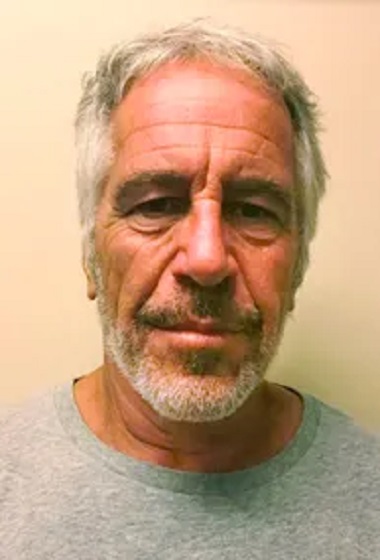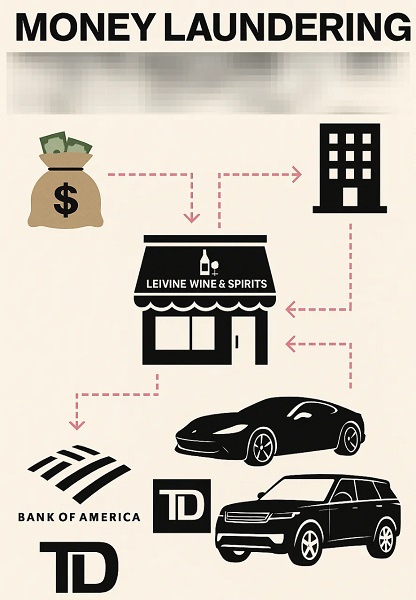Crime
ASIRT Investigation reveals a series of life-threatening incidents police officers overcame to arrest suspects
From the Alberta Serious Incident Response Team (ASIRT)
RCMP officers acted reasonably in shootings
On Oct. 13, 2017, the Alberta Serious Incident Response Team (ASIRT) was directed to investigate the circumstances surrounding two officer-involved shootings that occurred the same day during a continuing event.
The first officer-involved shooting resulted in a minor gunshot wound to a 20-year-old woman. The second officer-involved shooting resulted in serious injuries to a 20-year-old man. Evidence obtained during the investigation included statements from civilian witnesses, EMS personnel, all involved officers and the occupants of the stolen vehicles, as well as radio communications and multiple available video recordings of portions of the events.
On Oct. 13, 2017 at 9:14 a.m., a man called RCMP to report that he had just been involved in a dispute with another man driving a light-coloured Chevrolet truck and when he attempted to confront the driver, the man threatened him with a large knife. There was a female passenger in the truck. When police ran the licence plate provided and contacted the registered owner, it was determined that the truck had been stolen from the Didsbury area earlier that morning.
At 1:30 p.m., the first man and woman picked up a second man in Innisfail who had just been released on bail, having been arrested for possession of a stolen vehicle the day before. They did so in the stolen vehicle seen earlier in the day in Sundre.
At approximately 3:15 p.m., the son of the stolen truck’s owner called RCMP to report that he had spotted the stolen truck in Sundre and was following it. In response, the driver of the stolen truck rammed the son’s car and attempted to run him over when he exited his vehicle. The man threw himself out of the way, but he was struck and sustained minor injury to his leg. The female passenger waved a large knife and threatened to kill the son.
A short time later, officers came across the truck, and unsuccessfully tried to conduct a traffic stop. As officers pulled alongside, the driver could be seen wearing sunglasses and a bandana covering his nose and mouth. The officers terminated the pursuit as both trucks headed west of Sundre but shortly thereafter, they saw the stolen truck driving on a rural road. The driver taunted police as he passed them. Due to concerns for public safety, police did not initiate a pursuit.
The same officers encountered the stolen truck being driven in Caroline but, again, no pursuit was initiated. Shortly thereafter, the officers followed as the truck was driven into a field. The driver turned around and drove back in the direction of the officers who exited their vehicle and drew their service pistols. The truck drove a wide arc around them, so neither officer fired.
At approximately 3:45 p.m., other officers saw the stolen truck travel north on Hwy 22, just west of Caroline, and followed. Police unsuccessfully tried to set up spike belts at two locations but the stolen vehicle avoided them, in one case driving directly at an officer, who had to take evasive action to avoid being struck.
A pursuit was declared shortly after. While followed by two separate police vehicles with emergency lights activated, speeds reached 170-180 km/hr. As the pursuit headed eastbound on TWP Road 400, the woman in the back seat of the stolen truck threw a child’s car seat and other items onto the roadway, creating hazards and attempting to deter the police from continuing their pursuit. The first man was driving and the second man was in the front passenger seat.
As the stolen truck was pursued eastbound onto TWP Road 394, it approached a driveway where an officer had parked his police vehicle and extended a spike belt across both lanes, holding the line in the north ditch. The first man drove the stolen truck left of centre and turned into the north ditch, driving towards the officer. He suddenly pulled back onto the road and the officer ran back beside his police vehicle and drew his pistol. The stolen truck entered the south ditch, drove over the driveway approach past the officer and police vehicle, avoiding the spike belt and returned back to the road, moving eastbound.
Instead of continuing eastbound, the truck swung around to face back towards the officer, his police vehicle and two other officers who had arrived and placed their police vehicles to partially block off any westbound escape. The truck headed directly towards the officer who had earlier placed the spike belt as he stood by his police vehicle. The officer believed that the driver was purposely trying to “run” him over as there was no reason to proceed westbound and engage with police when the eastbound road was unobstructed. At approximately 4:27 p.m., as the truck drove towards the officer, fishtailing and colliding with the police vehicle and coming within feet of the officer, the officer and one other fired their service pistols. A bullet grazed the top of the back of the woman’s head causing a relatively minor laceration.
The truck drove over the spike belt, which destroyed the passenger side tires, leading the truck to flee on its rims at approximately 60-70 km/hr. As an officer tried to set up another spike belt, the truck drove at the officer, who had to retreat to the ditch. At 4:31 p.m., as the truck approached the Hwy 20 intersection, an officer was authorized to force the truck off the road. The officer rammed the side of the truck, forcing it into the north ditch with the police vehicle on one side and a fence on the other. The two men climbed through the passenger window and fled to a nearby field, leaving the injured woman in the back seat.
When the two men came upon a farmhouse, they observed a woman run inside. They approached and kicked in the door to the home where two women were present with children. When they found out the women had no keys to the vehicles on the property, the men took their cellphones so they could not call for assistance, and fled to a second rural residence. They broke into vehicles, obtained a garage door opener to gain access to the residence and obtained keys to a black Ford F250 truck that they then attempted to flee in. The second man was now driving with the first man in the front passenger seat. As they were driving out, an officer driving towards them twice attempted to pin them in on a fence but the stolen truck suddenly reversed and rammed the police truck with enough force to set off the airbags, disabling the police vehicle.
The newly stolen truck was driven through the field and down the 500-metre driveway to access Hwy 20, approaching a point where two officers were placing a spike belt. The truck drove off the roadway into the ditch where one armed officer was. A second armed officer moved forward towards the truck on the south grass shoulder of the driveway. The vehicle suddenly accelerated, re-entered the roadway, swerved aggressively to avoid the spike belt and drove directly towards the second officer. Had he not taken evasive actions, it is beyond dispute that the officer would have been struck by the middle of the front grill of the stolen truck. Available video confirmed that the stolen truck came within what appears to be a matter of 12 to 18 inches of the officer, causing both officers to discharge their service pistols.
Unknown to the officers, the 20-year-old driver sustained two gunshot wounds that left him unable to feel or move his legs. The truck briefly came to a stop in the south ditch, just short of Hwy 20. When the passenger looked through the broken rear window and appeared to reach for something, officers shouted commands to stop. The passenger reached his leg over the center console and “floored” the accelerator, causing the officers to resuming firing.
The truck drove out of the east ditch, crossed Hwy 20 and went into the west ditch where it became immobilized in a grove of trees. Police provided medical care to the injured driver until Emergency Medical Services arrived. Ultimately, the man was airlifted to hospital by STARS air ambulance.
Of the two shots sustained, one shattered the man’s left forearm and the second shot entered his left shoulder shattering bone before becoming lodged in his spine resulting in permanent paralysis.
Having reviewed the comprehensive investigation, Susan Hughson, QC, Executive Director for ASIRT, has determined that there are no reasonable grounds to believe that the officers involved in these events committed any criminal offence(s). As such, no officer will be charged.
Under the Criminal Code, a police officer is authorized to use as much force as is reasonably necessary to perform his or her lawful duties. An officer may only respond with lethal force in circumstances where he or she reasonably believes that there is an imminent risk of death or grievous bodily harm to the officer or any other person. An officer may also use lethal force to prevent flight in limited circumstances.
At the time of this incident, the involved officers were all acting in the lawful execution of their duties. There were more than reasonable grounds to believe that some or all of the occupants of both the first and second stolen trucks had committed indictable criminal offences.
In the entire course of these events, the conduct of the three individuals could objectively demonstrate the danger and significant risk to public. Multiple videos combined with the evidence of both civilian and police witnesses demonstrated that the three occupants of both stolen trucks were reckless, motivated to do whatever was necessary to evade apprehension and, in those circumstances, extremely dangerous. Both men reported that it had not been their intention to hit anyone. However, their conduct, at a minimum, would have created a reasonable apprehension that this was their intent. One person had been threatened and struck, another had been threatened with death, and the stolen vehicles had been driven towards officers in a manner that could easily have been interpreted as an intention to run them down.
Based on the actions of these three individuals, it is only good fortune that no civilian nor police officer was seriously injured or killed. At the time of the first officer-involved shooting, the circumstances created an objectively reasonable belief that there was an imminent risk of grievous bodily harm or death and, as such, officers were entitled to use lethal force. At the time of the second officer-involved shooting, once again, the circumstances created an objectively reasonable belief that there was an imminent risk of grievous bodily harm or death and both officers were entitled to use lethal force to address that threat.
Although the injury is believed to have occurred by the time of the attempted flight with the assistance of the passenger, based on all the evidence, it was subjectively and objectively reasonable to resort to lethal force to prevent further flight. The force used was necessary for the purpose of protecting the officer or any other person from imminent or future death or grievous bodily harm. Both men had repeatedly demonstrated a willingness, over a very limited period of time, to risk causing death or grievous bodily harm to both civilians and officers to further their flight and evade apprehension, and had engaged in a protracted crime spree doing so. The risk was not hypothetical. The threat was relatively immediate. In their multiple encounters that day, they had threatened and/or endangered life. If anything, their conduct had been escalating. The rapid forward movement of the vehicle was reasonably inferred to be an attempt at continued flight and the vehicle had a clear path forward. The only means at their disposal in that moment was the use of lethal force. Given the demonstrated conduct of both men, they needed to be stopped before they seriously injured or killed someone. The fact that they had not done so to that point was the result of good luck, nothing more. It was reasonable to act in the circumstances.
ASIRT’s mandate is to effectively, independently, and objectively investigate incidents involving Alberta’s police that have resulted in serious injury or death to any person. This mandate includes incidents involving discharge of a firearm that would likely have resulted in serious injury or death had the person been struck.
Crime
Former Epstein lawyer: There was never a client list

Quick Hit:
Jeffrey Epstein’s former attorney Alan Dershowitz says there was never a “client list,” calling the claim fiction in a Wall Street Journal op-ed. He also defended President Trump, saying there’s no evidence of any improper or questionable behavior.
Key Details:
- Dershowitz wrote that Epstein “never created a ‘client list,’” and clarified that the FBI only documented names brought up by alleged victims in interviews, which were redacted in released files.
- He stressed that none of the redacted names are current officeholders and added that the veracity of the accusations remains unknown.
- Dismissing rumors of hidden cameras used to entrap guests, Dershowitz said surveillance tapes existed only in public areas and were installed by law enforcement—not Epstein.
Diving Deeper:
In a Wall Street Journal op-ed this week, constitutional attorney Alan Dershowitz addressed lingering speculation surrounding the late Jeffrey Epstein, his alleged surveillance operation, and his reported ties to public figures. Dershowitz, who represented Epstein years ago and has consistently challenged many media narratives surrounding the case, said the facts don’t support the sensational claims.
“Epstein never created a ‘client list,’” Dershowitz wrote, pushing back on the widely circulated notion that Epstein maintained a record of high-profile individuals for the purpose of blackmail. He clarified that the FBI had compiled names mentioned by alleged victims during interviews, but that those names were redacted in publicly released documents. “We don’t know whether the accusations are true,” he added. “The names mentioned don’t include any current officeholders.”
Dershowitz also sought to debunk claims that Epstein maintained a secret camera system in his guest bedrooms to entrap powerful visitors. “There are videotapes, but they are of public areas of his Palm Beach, Fla., home,” he wrote. According to Dershowitz, those surveillance cameras were installed by police after Epstein reported that money and a firearm were stolen from the property. “I am not aware of video cameras in guest bedrooms,” he added.
Turning to President Donald Trump, Dershowitz flatly denied that any evidence exists linking him to wrongdoing. “Open records show an acquaintance between Epstein and President Trump many years ago,” he wrote, before emphasizing that the relationship ended long ago. “That relationship ended when President Trump reportedly banned Epstein from Mar-a-Lago, long before becoming president the first time.”
“I have seen nothing that would suggest anything improper or even questionable by President Trump,” Dershowitz concluded.
His remarks arrive amid a resurgence of political and media interest in Epstein’s associations. But Dershowitz’s message is clear: much of the speculation is unsupported by evidence, and President Trump’s name should not be dragged into narratives that have no basis in fact.
Business
PRC Money Laundering Probes Secured Beijing Influence Case Into New York Governors Office

Salted Ducks, Supercars, and State Access: How FBI Agents Say Beijing Bought Influence in the Heart of New York Government
The upcoming trial of Linda Sun — also known as Wen Sun — may prove to be the most sophisticated and high-level political infiltration operation in the United States publicly tied to Beijing’s United Front system. A youthful, naturalized immigrant from China, Sun rose through New York State’s bureaucracy to become a senior diversity official. Now, she stands accused of secretly manipulating two Democratic governors — effectively scripting Andrew Cuomo’s praise of Chinese pandemic mask shipments, while blocking Governor Kathy Hochul from meeting Taiwanese officials and ensuring her silence on the Chinese Communist Party’s mass detention of Uyghurs.
According to a sweeping superseding indictment filed in June 2025, Sun and her husband Chris Hu began enriching themselves through large-scale money laundering and corruption as early as March 2020, just weeks into the COVID-19 emergency. Prosecutors allege that Sun exploited her insider position to steer over $34 million in pandemic-era PPE contracts to companies tied to her husband and relatives — all while concealing her financial interests. In exchange, Sun and Hu allegedly received more than $8 million in kickbacks, routed through a constellation of opaque bank accounts and disguised as legitimate business revenue.
Luxury perks included gifts of Nanjing ducks and high-end travel to China, including a stay in a Beijing hotel suite previously used by former First Lady Michelle Obama. According to federal agents, much of the couple’s illicit income was funneled from China through underground banking and masked wire transfers into Leivine Wine & Spirits, a high-end boutique liquor store in Flushing that allegedly operated as a laundering front for Chinese-backed capital.
A criminal trial for Sun, 41, and Hu, 40, is scheduled for November.
The government further alleges that Sun’s influence reached into the core of New York’s executive branch. Under then-Governor Cuomo, Sun allegedly coordinated with senior officials from the Chinese Consulate in New York to orchestrate public expressions of gratitude toward Beijing during the early COVID-19 crisis. This culminated in Cuomo’s April 4, 2020 tweet: “We finally got some good news today. The Chinese government helped facilitate a donation of 1,000 ventilators that are coming in today. We thank @ConsulGeneralNY and the Chinese government.” According to FBI agents, this statement was not spontaneous — it was part of a covert diplomatic effort Sun was tasked with securing, even as she and her husband were allegedly profiting from tens of millions of dollars in pandemic-era contracts awarded to entities secretly tied to them.
Sun and Hu deny all allegations. Their attorneys have mounted a vigorous defense, filing numerous motions to dismiss the charges and suppress evidence obtained through federal search warrants. The most recent failed motion, filed a week ago, asked the government “to retract and delete its June 26, 2025 press release” regarding the new PPE-fraud and money-laundering allegations, and accused FBI Director Kash Patel of prejudicing the case with this post to X: “While Americans were locked down and desperate for PPE, Linda Sun and Chris Hu cashed in – allegedly lining their pockets while serving CCP interests. This is corruption that endangered lives. The FBI will not tolerate public officials who sell out their country.”
Under Governor Hochul, Sun’s alleged covert activities reportedly accelerated. Federal prosecutors say she obtained unauthorized gubernatorial proclamations honoring PRC officials, used back-channels to attempt to arrange an official visit to China’s Henan Province for Hochul while she served as lieutenant governor, and allowed PRC consular officials to preview and influence Hochul’s public remarks. In one instance, agents allege, Sun ensured Hochul made no public mention of China’s mass detention of Uyghurs in Xinjiang, after consular feedback was relayed to her directly.
Together, these allegations portray a striking level of access and manipulation. Operating from within her official diversity, equity, and inclusion role, Sun allegedly ran a parallel influence campaign that touched the highest levers of power in New York — the fourth-largest U.S. economy, with an annual budget exceeding $230 billion and nearly 180,000 employees.
If proven, Sun’s efforts would amount to the most successful Chinese influence campaign yet documented in open court — directly advancing President Xi Jinping’s foreign-policy objectives under the banner of United Front political warfare.
Yet a deeper investigation by The Bureau — combing through hundreds of pages of court records, financial exhibits, and suppression filings — suggests that money laundering, more than political access, may be the case’s more sophisticated and entrenched operational spine.
As striking as Sun’s apparent success in realigning New York’s political posture toward Beijing may be, that influence appears to be just one layer within a larger machinery — an engine designed not only to exert political leverage but to move massive flows of illicit capital, benefitting both the conspirators and their state-linked patrons.
In this context, Sun’s foreign-influence campaign increasingly resembles a node within a broader financial architecture — one that suggests Chinese intelligence may be providing the hidden hand behind similar cross-border dealings across North America. The pattern aligns with tactics long attributed to the United Front Work Department, which fuses economic infiltration with political co-option, often through trusted intermediaries embedded in diaspora communities and public institutions.
In Sun’s case, federal investigators say the FBI identified more than 80 financial accounts linked to the couple, tracking complex movements of capital between the U.S. and China, with the use of shell companies, luxury real estate, and boutique storefronts to disguise covertly sourced funds.
What emerges is not simply a corruption case — but a revealing blueprint of how modern state-backed influence operations can be financed, layered, and laundered through global finance and trade.
According to filings, the main unidentified Chinese diplomat and United Front conspirators included, CC-1, a naturalized U.S. citizen originally from China, playing a central behind-the-scenes role in Linda Sun’s alleged influence operation. As president of a New York–based nonprofit representing individuals from China’s Henan Province, CC-1 led an organization that federal prosecutors say was tightly linked to the Chinese Communist Party’s United Front Work Department — or UFWD — a political warfare unit tasked with cultivating support for Beijing among influential elites worldwide. According to the indictment, CC-1 issued strategic directives to Sun, including instructing her to draft invitation letters for Chinese delegations, organize official visits, and tailor communications to suit CCP interests. The UFWD, prosecutors noted, “attempted to manage relationships with and generate support for the CCP among elite individuals inside and outside the PRC, including by gathering human intelligence.”
CC-2, meanwhile, was a U.S. legal permanent resident who maintained active business interests in China’s Shandong Province. Identified as a principal in several U.S.-based Chinese associations — including a chamber of commerce for Chinese immigrants — CC-2 allegedly operated as another key intermediary in the broader influence network. Federal prosecutors also identified at least four high-ranking officials at the Chinese Consulate in New York — PRC Official-1 through PRC Official-4 — as central actors in the alleged foreign interference scheme. PRC Official-1 and PRC Official-2 held senior leadership roles, while PRC Official-3 and PRC Official-4 were assigned to the consulate’s Political Section. Based on similar job titles in Canada, such Political Section diplomats may fit the profile of undercover intelligence handlers of diaspora United Front agents — trained to operate within embassies and consulates as covert operatives.
In a statement to The New York Times following June’s superseding indictment, Jarrod Schaeffer, Sun’s attorney, said prosecutors were “publicizing feverish accusations unmoored from the facts.” Seth DuCharme, representing Hu, said the government was “scrambling to try to come up with some new charging theory” ahead of trial.

The Money Trail: From Pandemic Profits to Wine Cellars and Real Estate
Federal prosecutors say Linda Sun and Chris Hu built a life of stunning opulence — allegedly financed by laundering proceeds from covertly awarded pandemic contracts and PRC-connected business activity. Among the assets now under federal forfeiture: a $3.6 million mansion in Manhasset, a $1.9 million condo in Honolulu’s prestigious Ala Moana district, and a $1.5 million home in Forest Hills, Queens. Their vehicle collection rivaled that of global elites — including a 2024 Ferrari Roma, a new Range Rover, and a 2022 Mercedes SUV.
Agents also recovered $140,000 in cash, including $130,000 from a TD Bank safe-deposit box in Flushing, and nearly $83,000 frozen across various personal and brokerage accounts. Investigators uncovered a pattern of carefully orchestrated gifts from senior Chinese officials — most strikingly, the delivery of at least 18 salted ducks between 2021 and 2022. In Chinese culture, such ducks — especially the revered Nanjing variety — are not just festive delicacies, but symbols of insider favor and elite status.
The money trail, prosecutors allege, began in China. As laid out in the June 2025 indictment, Chris Hu’s business operations — including a PPE venture with an unnamed partner and a lobster-export business tied to China-based buyers — generated millions in revenue. Rather than transferring those funds legally, Hu allegedly relied on unlicensed money remitters — the hallmarks of Byzantine underground banking systems documented by DEA probes such as “Project Sleeping Giant.” These funds were then funneled into U.S. banks, including TD and Bank of America, via shell companies and family-linked accounts — among them, one associated with Leivine Wine & Spirits.
“There were no mortgage loans taken in connection with these acquisitions,” the indictment notes.
“Hu repatriated this wealth to the United States by, among other measures, using one or more unlicensed money-remitting businesses; depositing cash payments into multiple accounts associated with Hu’s family and businesses, including into an account associated with the Wine Store,” the indictment explains. The couple’s real-estate spree, prosecutors add, “occurred soon after Hu received a series of wire transfers totaling more than $2.1 million from a PRC-based account bearing the name of [Hu’s Chinese business partner].”
At the center of this alleged laundering web sits Leivine Wine & Spirits, a boutique liquor store inside an upscale Flushing development. Though marketed as a premium destination — with a temperature-controlled cellar housing bottles priced between $20,000 and $50,000, and a rare $5,200 Dalmore single malt — Hu’s reported financials, supposedly based largely on bulk-cash sales and $80,000 in monthly cash deposits, raised red flags.
“We partner with world-renowned brands to offer exclusive tastings, have sections of curated and rare bottles, and a knowledgeable staff to assist with your every need,” the store’s website declares. But as FBI Special Agent Devin Perry wrote in his affidavit: “Wine and liquor stores, such as Leivine, generally conduct primarily cashless transactions. Given Leivine’s location in a high-end development in Flushing, I assess it is unlikely that the large volume of cash Hu has been depositing in Leivine accounts constitutes Leivine’s actual income.”

That assessment proved pivotal. In May 2025, U.S. District Judge Brian Cogan denied Hu’s motion to suppress evidence gathered in the FBI’s 2024 warrant targeting the wine store — a ruling that cleared the path for expanded money-laundering and PPE-fraud charges in the June superseding indictment. Cogan’s decision laid out in striking detail how Leivine allegedly served as a conduit for cash flowing from Sun’s covert foreign-influence activities, presenting a textbook case of illicit financial engineering.
Among the key findings:
- $10,000 in unexplained cash was seized from Hu’s residence, which he claimed was store revenue awaiting deposit.
- More than $200,000 in cash deposits had been made into Leivine’s accounts before its official opening in November 2022.
- From August 2022 to February 2024, the store averaged $77,000 in monthly cash deposits.
- Hu personally wired $1.123 million from his private accounts into Leivine’s business accounts.
- Seven feeder accounts — all in Leivine’s name — funneled funds into a central Bank of America account, with four of them transferring over 97 percent of their deposits to that destination.
Judge Cogan found these flows consistent with structured layering techniques widely associated with professional money laundering. The transactions, he ruled, were sufficient to uphold the warrant, writing that “the affidavit still established probable cause,” and that Hu’s suppression arguments failed to overcome the weight of evidence.
Suppression and Dismissal
Beyond the 2024 Leivine warrant, federal investigators had been collecting evidence for years. The affidavit supporting the search of the couple’s Manhasset mansion laid out a web of digital communications, financial records, and testimonial evidence pointing to Sun’s role as an undeclared foreign agent for the People’s Republic of China.
FBI Special Agent Devin Perry cited messages between Sun and her parents as key proof that she “acted to benefit the PRC government and traded access for various PRC government representatives and agents, in return for economic considerations.” These communications included “numerous WeChat messages” in which Sun and her parents discussed her alleged assignments — such as when a figure referred to as “Chairman Xia” upgraded her airfare, and Sun assumed Xia “would start asking her to do him favors such as arranging peoples’ visits (to the Governor’s office).”
WeChat logs also allegedly showed Sun, Hu, and Sun’s parents receiving gifts from PRC officials, and Sun and Hu using her parents as straw purchasers for vehicles. Judge Cogan ruled that Hu’s motion to dismiss the related warrant lacked foundation.
While Sun sought to dismiss all charges, claiming there was no evidence she knowingly acted as an unregistered foreign agent, Judge Cogan disagreed. In a sweeping May 5 ruling, he rejected her motion and dismantled her core argument — that she lacked authority to influence New York’s highest offices and therefore could not qualify as a foreign agent under U.S. law.
Among the most explosive allegations: Sun boasted to senior Chinese consular officials that she had blocked Taiwan’s representative office, known as TECO, from any contact with top New York officials. In January 2019, she wrote to a senior Chinese diplomat, “Certainly I have managed to stop all relations between the TECO and the state. I have denied all requests from their office.” By February 27, 2019, she went further, instructing a staffer for Governor Cuomo to reject a meeting request from a visiting Taiwanese mayor: “No to the request. Explain in person.”
Judge Cogan highlighted what may be the most damning element of the case: many of Sun’s alleged clandestine acts occurred after she had been explicitly warned by federal authorities. On July 15, 2020, Sun voluntarily sat for an FBI interview, during which agents advised her of the Foreign Agents Registration Act (FARA) and warned that “if someone operated on behalf of the Chinese government without registering as a foreign agent, they could be in violation of FARA.”
But the FBI was already watching long before that warning. The indictment cites a 2018 episode in which a senior United Front agent, identified as CC-1, allegedly tasked Sun with arranging an official visit to New York for a Henan Province delegation — including a meeting with then-Lieutenant Governor Kathy Hochul. Sun allegedly drafted two versions of an invitation letter on official governor’s-office letterhead — despite having no authority to issue such invitations.
The scheme deepened in 2018 and 2019. CC-1 again tasked Sun — this time with coordinating a return visit for Hochul to Henan, a trip aimed at showcasing Beijing’s ties with a prominent U.S. state. On November 26, 2018, CC-1 instructed Sun to send Hochul’s résumé and propose an itinerary. She complied immediately, sending both the résumé and Hochul’s official email address. She was then instructed to update and reissue invitation letters on May 17 and September 16, 2019, tailoring them to Chinese diplomatic preferences.
Judge Cogan also cited Sun’s alleged role in facilitating fraudulent invitation letters to support illegal visa applications for the Henan delegation. The diplomatic trip, pitched as part of a proposed $1 billion joint-campus project with New York universities, appeared to be a United Front cover operation to deepen Beijing’s political and economic influence in America.
Through these efforts, Sun allegedly used her access not only to open doors for Chinese officials — but to slam them shut on geopolitical rivals, especially Taiwan.
The indictment also shows that Sun, even after the FBI warning, allegedly continued acting on behalf of PRC officials — including repeated interventions to shape New York State policy toward Taiwan and giving consular officials advance access to official state communications.
In early 2021, Sun allegedly provided the Chinese consulate with a draft of Governor Hochul’s public remarks, allowing Beijing to sanitize the language and strip references to sensitive topics such as the Uyghur detentions. “Based on feedback from a PRC government official, [Hochul] did not publicly address the detention of Uyghurs in PRC state-run camps in Xinjiang,” the judge noted, citing FBI evidence.
“These actions, as alleged, demonstrate Sun using her authority and power to induce action or change the decisions or acts of another,” Judge Cogan wrote, concluding that they were “sufficient to constitute the ‘influence’ element of a FARA offense, even as Sun defines it.”
Finally, Judge Cogan emphasized that the indictment establishes Sun’s understanding that her alleged United Front handlers — CC-1 and CC-2 — were acting as agents of the PRC and the Communist Party. As the indictment puts it: “Sun understood that CC-1 and CC-2 were themselves acting as agents of the PRC government and the CCP when they made requests of Sun.”
The Bureau is a reader-supported publication.
To receive new posts and support my work, consider becoming a free or paid subscriber.
Invite your friends and earn rewards
-

 Education1 day ago
Education1 day agoWhy more parents are turning to Christian schools
-

 Alberta1 day ago
Alberta1 day agoOPEC+ is playing a dangerous game with oil
-

 Alberta1 day ago
Alberta1 day agoUpgrades at Port of Churchill spark ambitions for nation-building Arctic exports
-

 Business1 day ago
Business1 day agoIs dirty Chinese money undermining Canada’s Arctic?
-

 COVID-191 day ago
COVID-191 day agoJapan disposes $1.6 billion worth of COVID drugs nobody used
-

 conflict1 day ago
conflict1 day agoOne of the world’s oldest Christian Communities is dying in Syria. Will the West stay silent?
-

 COVID-191 day ago
COVID-191 day agoWATCH: Big Pharma scientist admits COVID shot not ‘safe and effective’ to O’Keefe journalist
-

 Bruce Dowbiggin1 day ago
Bruce Dowbiggin1 day agoHow Did PEI Become A Forward Branch Plant For Xi’s China?






